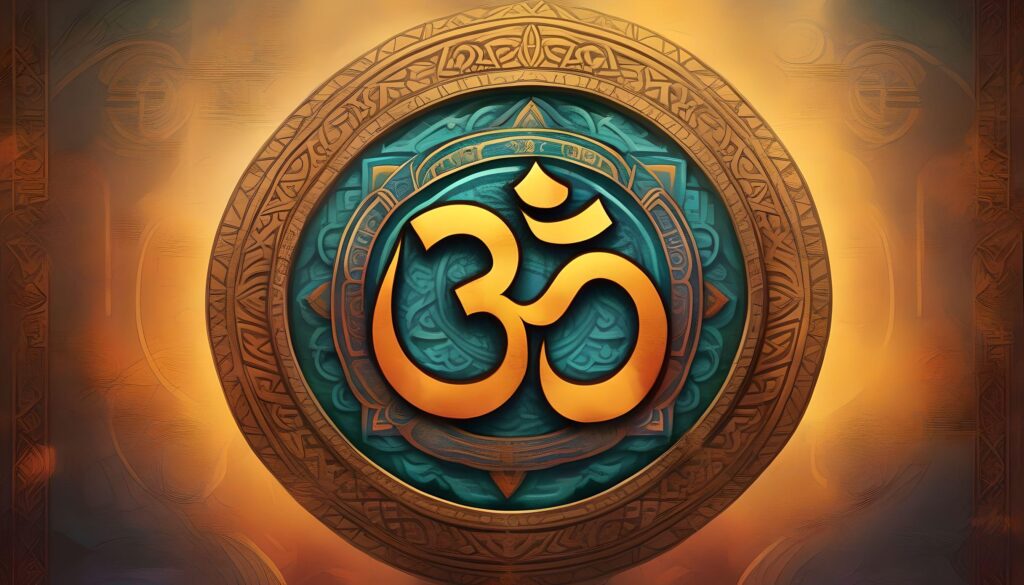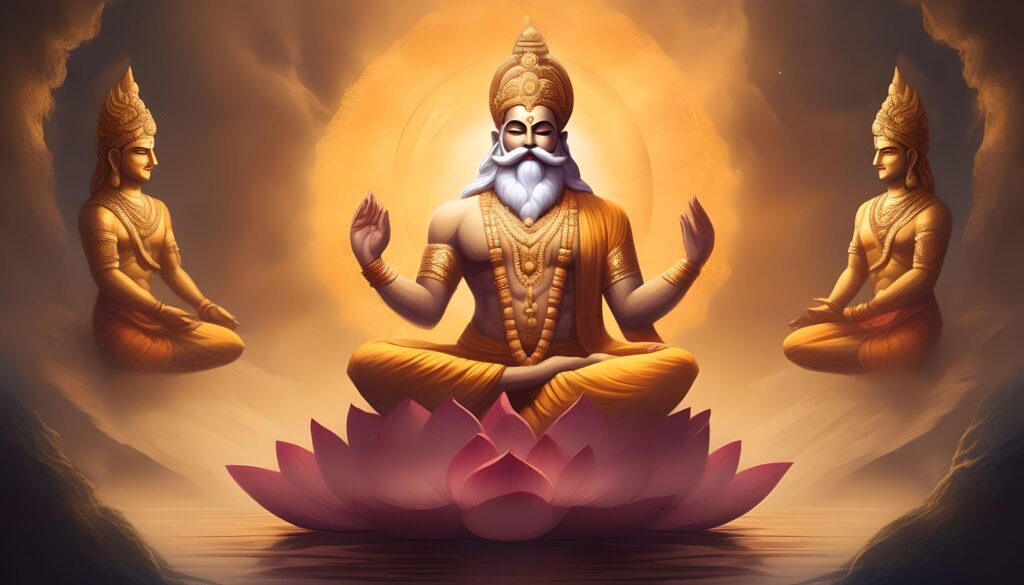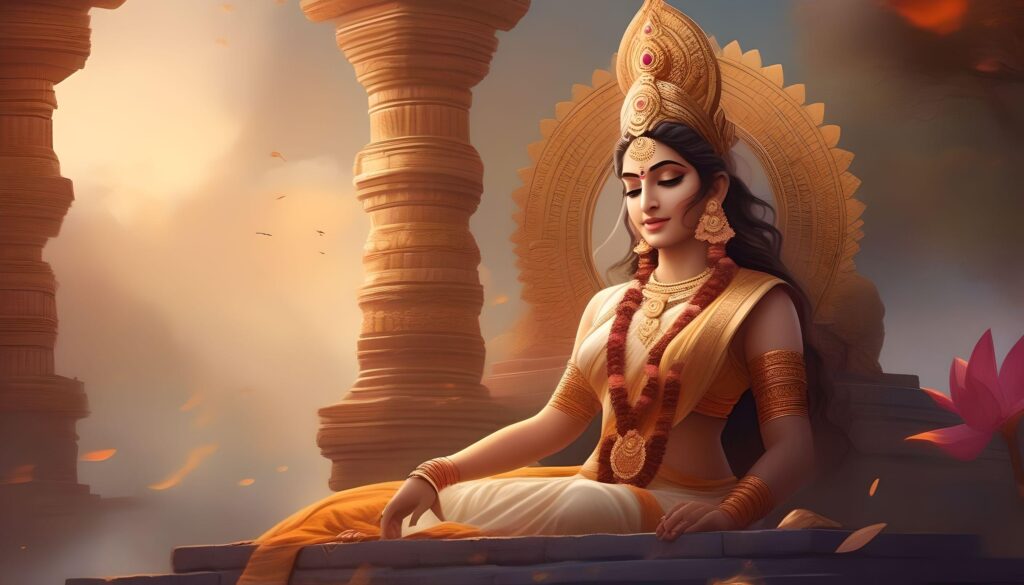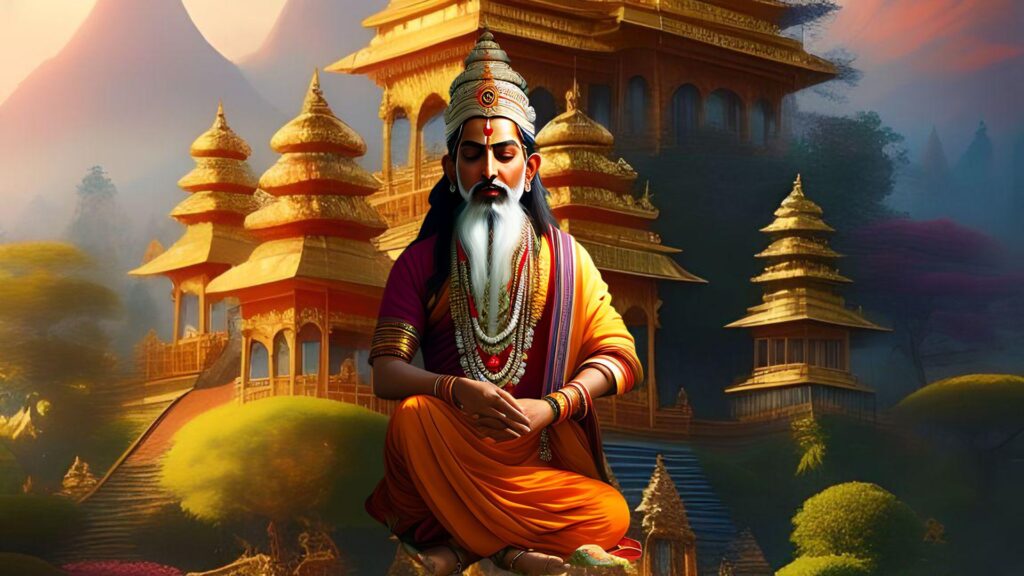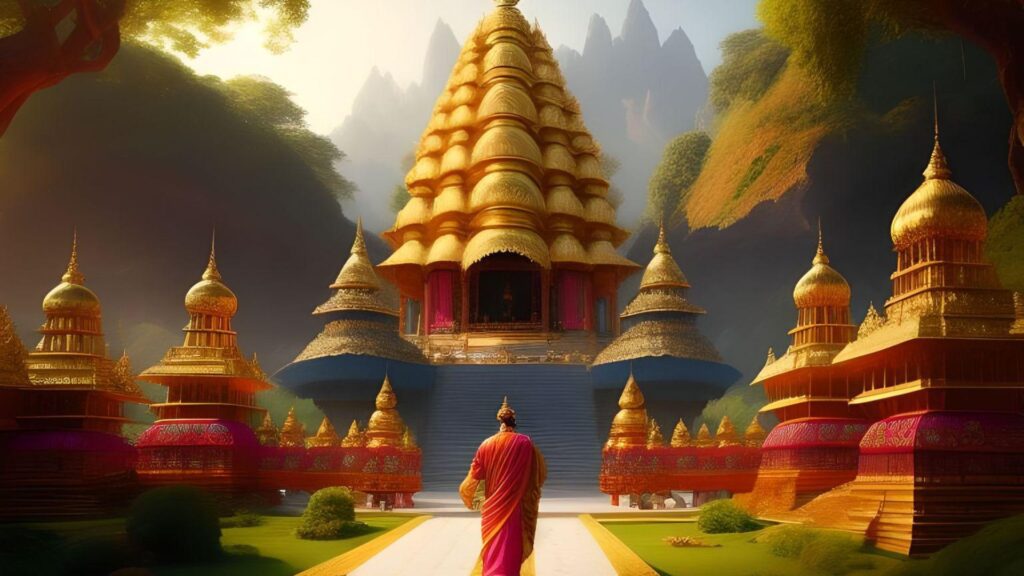Bhakti Tales in Hinduism : Divine Threads of Devotion
Story 1: The Lotus and the Thorns – True devotion
In the ancient city of Ayodhya, there lived a humble priest named Parth. He was known for his devotion to the gods and his kind nature. Every morning, Parth would visit the temple, chant prayers, and offer flowers to the deities as a sign of respect and gratitude.
One day, as he was walking to the temple, he noticed a beautiful lotus blooming in a small pond near the roadside. The lotus was exquisite, its petals radiating a mesmerizing aura. Parth was captivated by its beauty and decided to pluck it to offer it to Lord Vishnu in the temple.
As he reached for the lotus, he felt a sudden prick on his finger. He pulled back, surprised to find a thorn had pricked him. Undeterred, he tried again to pluck the lotus, but once more, the thorn stung him. Parth realized that the lotus, which appeared divine, was guarded by sharp thorns that caused him pain each time he tried to reach it.
Feeling puzzled, Parth wondered why something so divine would be surrounded by something harmful. He heard a soft voice coming from within, “O Devotee, I am a reminder that true divinity is not obtained through ease and beauty alone. To reach the divine, you must endure hardships and obstacles.”
Parth understood the message and decided to leave the lotus where it was. Instead, he chose a simple yet beautiful wildflower growing nearby and offered it to Lord Vishnu with all his heart.
That night, Lord Vishnu appeared in Parth’s dream and said, “O Devotee, you have shown true wisdom and devotion. The lotus you admired represents the allure of material beauty and desires. The thorns surrounding it symbolize the challenges and trials one must face in life. True spirituality lies not in pursuing fleeting pleasures, but in navigating life’s difficulties with love, compassion, and resilience.”
From that day onward, Parth’s devotion deepened, and he focused on serving others with selflessness and compassion. He understood that every experience, whether pleasurable or painful, was a part of life’s divine play, orchestrated by the gods to teach valuable lessons.
In time, Parth’s selfless service and wisdom earned him the respect and admiration of the people of Ayodhya. He became an inspiration to others, showing them that the path to spiritual enlightenment lay not in seeking temporary pleasures, but in embracing life’s challenges with a pure heart.
And so, the moral of the story is that true devotion in Hinduism, as in life, is not about pursuing material beauty and desires. It lies in accepting the thorns and challenges that come our way with grace and fortitude, and in serving others with love and selflessness. Only then can one find true divinity and attain spiritual growth.
Story 2: The Golden Lesson of Dharma
Once upon a time, in a small village nestled amidst the lush forests of ancient India, lived a young boy named Arjun. He was known for his cheerful nature and deep curiosity about the world around him. One day, he overheard the village elders speaking about the legendary Golden Statue hidden in the heart of the dense forest. It was said that whoever found the statue would be granted one wish, fulfilling their heart’s desire.
Eager to find the Golden Statue and fulfill his wishes, Arjun embarked on a journey into the forest. As he ventured deeper, the forest became thick and mysterious, and he faced many challenges. He encountered wild animals, treacherous terrains, and moments of utter solitude.
Throughout his journey, Arjun’s perseverance and determination never wavered. He kept his focus on the Golden Statue, envisioning all the material wealth and power he would possess once he found it. However, as days turned into weeks, he began to feel tired, and his initial enthusiasm started to dwindle.
One evening, as the sun was setting, Arjun stumbled upon an old hermit who lived alone in a humble abode deep in the forest. Seeing the exhaustion in Arjun’s eyes, the hermit offered him a warm meal and a place to rest.
Grateful for the hermit’s kindness, Arjun shared his quest for the Golden Statue and how he believed it would bring him happiness and prosperity. The hermit listened patiently and then smiled warmly.
“My young friend,” said the hermit, “the forest is not just a physical journey but also a journey of the soul. The Golden Statue may grant you temporary joy, but true happiness lies in understanding and following the path of Dharma.”
Arjun was puzzled, for he had heard the word “Dharma” before but did not fully comprehend its meaning.
The hermit explained, “Dharma is the righteous path, the way of moral and ethical living. It is the duty we owe to ourselves, our fellow beings, and the environment around us. The pursuit of material desires may provide fleeting pleasure, but Dharma offers lasting contentment and inner peace.”
As Arjun listened to the hermit’s words, a profound realization washed over him. He understood that his journey had become too focused on worldly desires, and he had lost sight of the true purpose of life.
With a newfound understanding, Arjun thanked the hermit and decided to end his search for the Golden Statue. He returned to the village and embraced a life dedicated to following the path of Dharma.
Over time, Arjun’s selfless actions and compassionate nature earned him the respect and love of the villagers. He became a guiding light, helping those in need and contributing positively to the welfare of society.
Years passed, and one day, when Arjun was an old man, he found himself in the same forest where his journey had begun. As he sat under a giant banyan tree, meditating on the purpose and meaning of life, he heard a gentle voice.
“Arjun, you have learned the true essence of Dharma,” said the voice. “For your selflessness and wisdom, I grant you the Golden Lesson of Dharma itself.”
As Arjun opened his eyes, he saw the banyan tree shimmering with a golden radiance. The tree transformed into a magnificent statue made of pure gold. But, unlike the Golden Statue he had once sought, this one radiated a serene and divine aura.
With a heart full of gratitude, Arjun bowed before the Golden Lesson of Dharma. He realized that he had found what he had been searching for all along – the key to genuine happiness and fulfillment.
From that day forward, Arjun continued to follow the path of Dharma, inspiring generations to come with his wisdom and compassion. And so, the moral of the story is that true wealth and happiness lie not in the pursuit of external desires but in living a life dedicated to the principles of Dharma – righteousness, compassion, and selfless service to others.
Story 3: The Weaver of Destiny
In a quaint village nestled amidst the serene banks of the holy river Ganges, there lived a skilled weaver named Ravi. He was renowned for crafting the most exquisite silk fabrics, which were sought after by people from far and wide. Ravi’s passion for weaving was fueled by his belief in the divine hand of the gods guiding his every creation.
One day, as Ravi sat at his loom, he noticed a peculiar pattern emerging in the fabric he was weaving. The pattern seemed to form a complex design that he had never seen before. Intrigued, he continued weaving, and with each passing day, the pattern grew more intricate, weaving itself into the fabric seemingly without Ravi’s direct intervention.
Overwhelmed by curiosity, Ravi sought guidance from the village sage, Devendra. He described the mysterious phenomenon and asked, “O wise sage, how is it possible that this pattern emerges on its own, without my conscious effort? Is it the work of the gods themselves?”
Sage Devendra, with a gentle smile, replied, “Indeed, dear Ravi, the gods work in mysterious ways. But, this weaving symbolizes the intricate web of destiny that governs all life. The gods have blessed you with this unique gift to remind you of the divine play that shapes the course of our lives.”
Ravi was both awed and humbled by the sage’s words. He continued to weave, now with a deep sense of reverence for the divine forces at play. Each thread he wove represented a person’s life journey, with joys, sorrows, challenges, and triumphs intricately entwined.
As the years passed, Ravi’s fame as a master weaver spread far and wide. People admired not only the beauty of his fabrics but also the spiritual essence woven into each piece. However, with increasing fame came pride and a sense of superiority. Ravi began to believe that his skills were unmatched and that he controlled his destiny.
One day, an old beggar woman approached Ravi’s doorstep. Her clothes were tattered, and her eyes held a deep sadness. She asked Ravi for a piece of fabric to shield herself from the biting cold. Fueled by his newfound arrogance, Ravi dismissed her plea, claiming that his fabrics were too precious to be given away.
The old woman’s eyes filled with tears, and she uttered softly, “Oh, weaver of destiny, remember that all are bound by the threads of fate. Your skills were a divine gift meant to be shared, not hoarded.”
Ignoring her words, Ravi continued with his work, his heart hardened by pride and arrogance. That night, as he lay in bed, he found himself unable to sleep, troubled by the old woman’s words. A sense of remorse engulfed him, and he realized the error of his ways.
Seeking redemption, Ravi rushed to the temple to seek guidance from the gods. There, he humbly prayed for forgiveness and vowed to use his skills for the greater good, recognizing that the true purpose of his gift lay in serving others.
From that day on, Ravi transformed. He used his talents to weave fabrics not just for the wealthy and noble but also for the less fortunate. He donated warm clothes to the needy during harsh winters and provided clothing to children in orphanages.
As he selflessly served others, the intricate patterns on his loom seemed to take on a new meaning. The fabric now depicted a harmonious dance of destiny, where every action and intention, good or bad, affected the grand design of life.
Ravi’s humility and selflessness earned him not only worldly respect but also the blessings of the gods. His life became a living testimony to the sacred teachings of Hinduism – that one’s actions, thoughts, and choices shape the tapestry of destiny.
And so, dear reader, let Ravi’s story remind us that our actions and choices hold the power to shape our destiny and influence the lives of others. In selfless service to humanity, we embrace the divine purpose of our gifts and find fulfillment in the unity of all souls within the intricate fabric of life.
#moralstories #hindustories #Bhakti #Devotion #stories #tales #hinduism #srichants #bhakti @srichants

